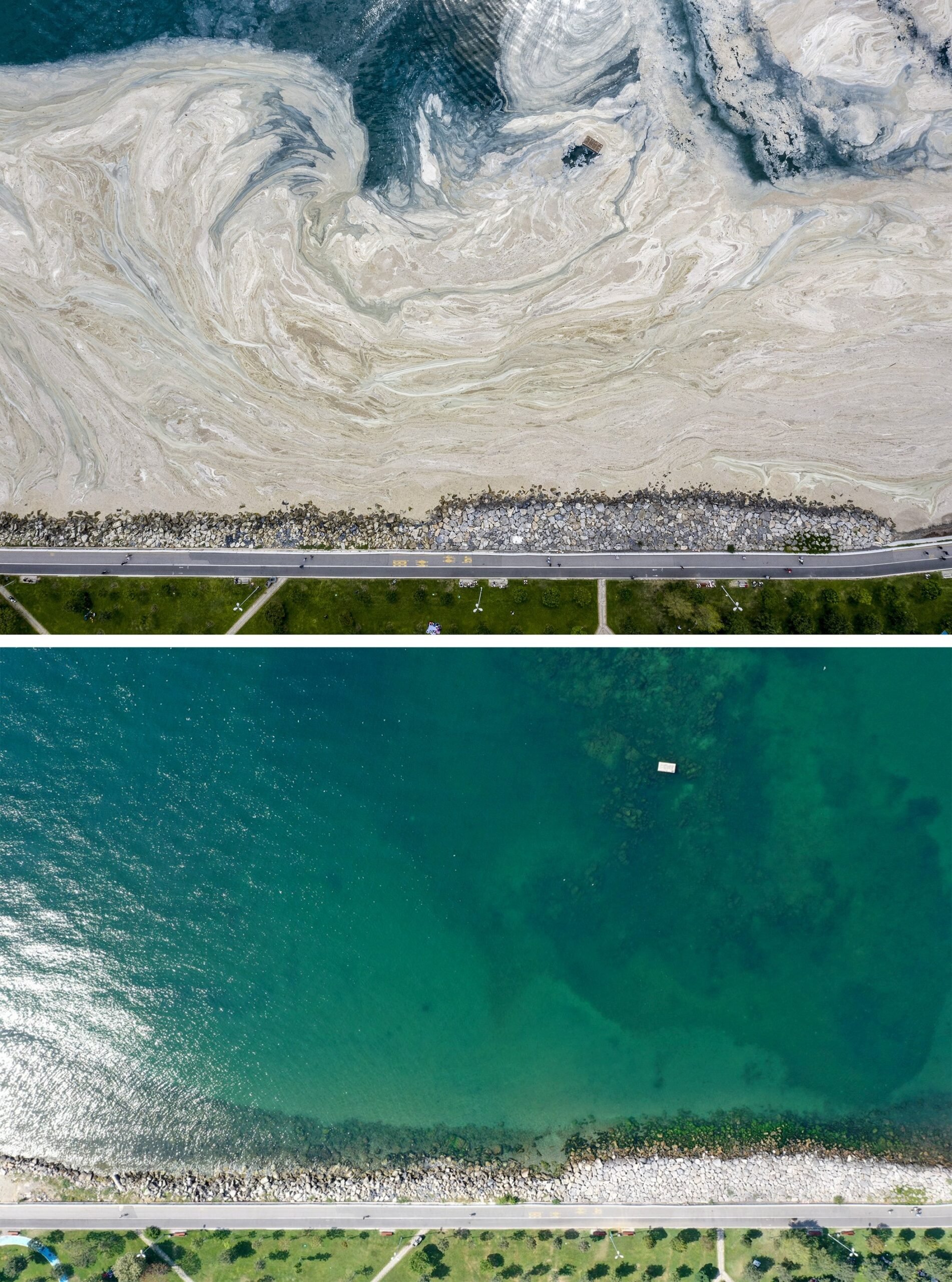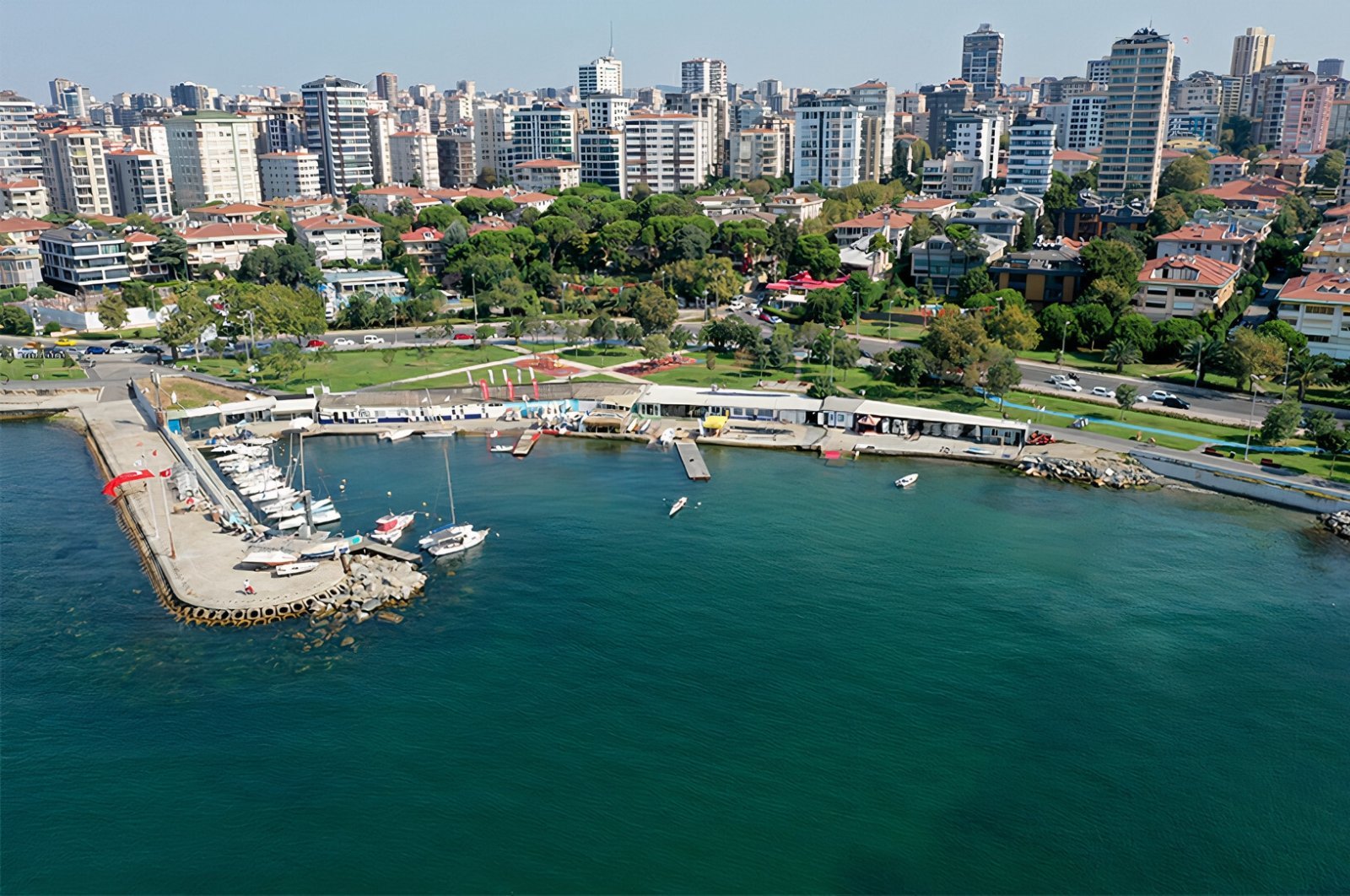Some five months after a thick, slimy substance called marine mucilage or sea snot covered the Marmara Sea, Istanbul’s shores regained their old blue.
Large globules of mucilage that had been sighted since March off the coast of Turkey’s largest city of Istanbul are now absent, aerial and underwater footage on the beaches of Istanbul show, confirming authorities’ declaration that the snot is gone. Work initiated by Turkey’s Environment and Urbanization Ministry as part of combating the mucilage has yielded significant results.

The population density on beaches where people flock during the summer when temperatures increase also attracted attention, with no mucilage observed in areas where people entered the sea. In addition, the seawater was clear as in the pre-mucilage days.
Mucilage is an overgrowth of microscopic algae called phytoplankton caused by rising seawater temperatures due to global warming, stagnant water and pollution. This year, it was detected in January and intensified and expanded in April, resulting in a serious problem, contrary to previous instances where it usually disappeared in a month to 45 days. As it continued to increase in intensity in May and June, Turkish authorities announced the 22-point Marmara Sea Action Plan to tackle the recent surge. The plan was jointly carried out by the Environment and Urbanization Ministry, Transportation and Infrastructure Ministry, as well as the Agriculture and Forestry Ministry. The health and interior ministries, among other bodies, nongovernmental organizations (NGOs) and coastal municipalities under the coordination of governorships, also took part in the plan.
The plan was followed by a massive land and sea cleanup campaign. In areas near the shores, sea snot-covered sections of the sea were marked and the mucilage was drained by vacuuming equipment. At sea, boats collected the mucilage and brought them to the land, for disposal at waste collection sites.










Discussion about this post